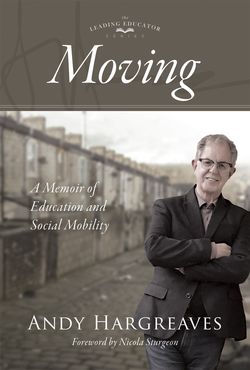Читать книгу Moving - Andy Hargreaves - Страница 9
На сайте Литреса книга снята с продажи.
Preface
ОглавлениеLa vida no es otra cosa que una excusa para encontrar la manera de vivirla.
Life is nothing but an excuse to find the best way to live it.
—Carlos Páez Vilaró
This book has been unlike any other I have written. It is, most obviously, about my childhood and education through to the end of university. But it has also been written for the chords it may strike amongst others who have had similar lives of their own or who have witnessed those lives amongst parents, partners, children, colleagues, and friends.
It could never have been written without the existence of the lives that it describes—the everyday and often invisible lives of ordinary citizens who drive our buses and taxis, make our clothes, fix our appliances, clean our homes, keep us safe, serve us in the local store, and look after our children. The book is meant to speak especially to all those who have made sacrifices, given things up, left behind homelands, or taken on extra jobs so that they or their children could have the best-possible chance in life.
It is also a call to members of the political, economic, and cultural elites to give other people’s children the opportunities that they so eagerly want and assiduously ensure for their own—by willingly paying more taxes rather than less; by committing to the restitution of public education, public libraries, and public life; by choosing a good state school rather than an exclusive private education for their own children so they will get an opportunity to mix with a wider society; and by making a personal moral sacrifice to have a little bit less so that others who have a less favourable start might have a little bit more.
Through the lens of personal experience, the purpose of this narrative is to shed light on the phenomenon of social mobility. Social mobility has taken on growing importance in recent years as a way to try to deal with inequalities in society—not by providing restitution for low income or absence of wealth in working-class communities but by creating opportunities and pathways for children from working families to move up the income-and-wealth scale compared to their parents, over time, mainly through education.
The concept of social mobility was invented by Pitirim Sorokin in the 1920s. Sorokin experienced considerable social mobility in his own life. The son of a struggling travelling craftsman, he rose to be a professor of sociology at Saint Petersburg Imperial University. Because of his anticommunist views, Sorokin was arrested several times, sentenced to death at one point, and then eventually exiled to the United States, where he went on to establish the sociology department at Harvard University.4
Sorokin was fascinated by the existence of social stratification—the layering of social groups and their members in society by status, income, and wealth. In contrast to Marxist advocacy for proletarian revolution as a means to overthrow social-class inequality, Sorokin developed an interest in social mobility and especially what he called vertical mobility as a way to manage the existence of stratification through movement across the layers of income and status.
Sorokin understood social mobility as “any transition of an individual, social object or value … from one social position to another.” Vertical mobility—which could be ascending or descending, social climbing or social sinking—concerned “relations involved in a transition of an individual … from one social stratum to another.”5 Sorokin applied the idea of vertical mobility to groups as well as to individuals—something that will be explored further towards the end of this book.
Ours is a world of increasing social immobility rather than the opposite. It is as if more of us are static, socially paralysed, unable to move. If we could knowingly prevent physical paralysis or deterioration amongst individuals and refused to do so, we would be callous in the extreme. It’s now a great calling of our society to halt and reverse the paralysis of social immobility by reducing inequality and contributing more of our income and our lives to the greater public good. The book’s final chapter, in fact, builds on my own narrative of social mobility to set out three possible scenarios for how the frequency and quality of social mobility might unfold for people in general. These scenarios are meritocracy, where perfect mobility that gives everyone their just desserts can create as many problems as it solves; a new aristocracy, where those who have been socially mobile in one generation use their newly gained privilege to prevent others’ upward mobility and their own children’s downward mobility in the next; and economic democracy, where greater equality reduces the need and pressure for social mobility.
This book is about moving up, moving away, and moving on in a society where this kind of movement is rarely easy. And it is about the emotionally complex and moving experience of social mobility that manifests itself in anxiety, pride, stress, estrangement, relief, and much more besides. Whether you have been socially mobile, aspire to help young people be mobile, or occupy a position in policy or society where you can create conditions that enable others to become mobile, I hope that this is a book that might move you to help others around you move too.
